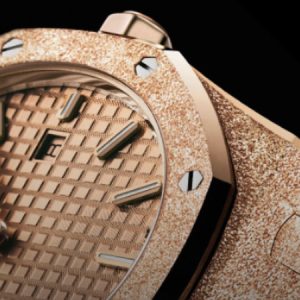The Audemars Piguet Royal Oak first debuted in 1972, and since then, the model has become one of the most famous watches in the world. It is distinguished by a number of fundamental qualities, including the preeminence of pure material and an instantly recognisable design code. If you consider yourself a genuine collector, models like the Royal Oak Offshore Diver or “Jumbo” Extra-Thin must be at the top of your wish list.

Discover your Perfect Luxury Timepiece and Enjoy Special Privilege only at The Time Place Boutique.
The History
The introduction of quartz watches triggered a “quartz crisis,” which threatened to disrupt the mechanical watch industry by the early 1970s. Audemars Piguet, a Swiss luxury manufacturer, realised they needed to create an innovative timepiece or face bankruptcy.
They commissioned renowned designer Gerald Genta to create a radical new model. Forged from steel, it would blend elements of sportiness and sophistication while boasting a premium finish and unique characteristics. It would also be a stark contrast to prior premium forms and materials, like a steel sports watch.

Genta created the Royal Oak in 1972, drawing inspiration from traditional diver’s helmets. Critics were sceptical at first (and practically convinced that Audemars Piguet would go bankrupt), but the timepiece quickly became popular among high-end collectors. The initial batch was known as the A-Series, and it was limited to 1,000 units. Multiple versions and evolutions would follow over the decades, and the Royal Oak is perhaps more desirable now than ever before
The Design Code
The Royal Oak is known as “the first luxury sports watch” because it is made of steel, which is typically associated with sturdy structures, but seems unexpectedly sophisticated. Furthermore, the use of high-grade steel for such a complex construction puts current machining capabilities to the test.
The polished and brushed surfaces lacked the opulence of the most expensive timepieces. From a design standpoint, the Royal Oak integrated strong and powerful characteristics that would never go out of style.

The deliberately angular shape immediately catches the eye, especially the octagonal bezel and hexagonal screws, which are always in gold, a subtle detail that produces a discreet contrast in light. The water-resistance gasket is left visible to emphasise the technical feel of this watch.
The case’s uniqueness stems mostly from the absence of lugs, which Genta replaced with a bracelet with trapezoid-shaped links that taper towards the case. A bracelet had rarely been so flawlessly and precisely integrated. Meanwhile, the dial featured a distinctive pattern of raised squares and grooves called the “Tapisserie” design.
Stay True to The Original Version
Audemars Piguet released numerous variants to mark the Royal Oak’s 40th anniversary in 2012, including a 39-mm version that was nearly identical to the original and established the norm for the current extra-thin line. The only noticeable modifications are the new inscription style and the blue date disc to match the dial.

Despite the fact that the mechanism remains the same, Calibre 2121, an automated mechanical movement that became a benchmark in the watch industry’s extra-thin calibres. The slim profile undoubtedly helped a lot with the popularity of the original Royal Oak. The thin profile offset what some saw as excesses in its design while maintaining the elegance one expects from a premium watch.
Discover the Audemars Piguet timepiece collections online or locate The Time Place boutique near you for a visit.





